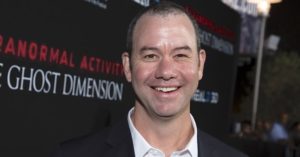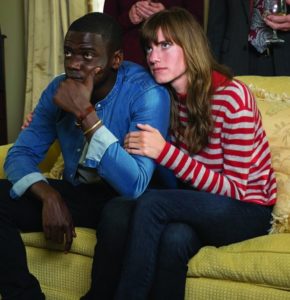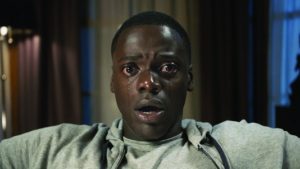
Why does the word “horror” movie have a stigma attached to it and what is truly scary in the modern age?
Is the horror genre classified as subpar because the movies were originally low budget and could be made quickly, under the aegis of the prolific, but largely unsung Roger Corman, who gave Francis Ford Coppola, Joe Dante, Martin Scorsese, James Cameron and Jack Nicholson (just to name a few), their start in the business?
In the last fifteen years, horror movies have turned from suspenseful and atmospheric to what New Yorker magazine’s David Edelstein has coined as “torture porn.” This popular phase began with the movie Saw, which premiered at Sundance in 2004 and was quickly followed by many cousins such as Eli Roth‘s Hostel in 2005. However, are these movies actually horror films? They definitely earned their own sub category of the

genre. Torture porn certainly make the audience squeamish with the use of a plethora a fake blood and stranded people in distress. But where is the thoughtful plot? Is there any subtext?
Jordan Peele‘s new film Get Out, distinguishes itself from recent scary films as it harkens back to the richly layered classic horror movies of the 1970s. Gregory Plotkin, the film’s editor, noted that when he and the director first met about prepping the film, “Peele’s face lit up when we talked about classics like Rosemary’s Baby and The Stepford Wives.” The opening scene in which a young black man (Lakeith Stanfield) quickly

walks down a well kept, quiet, middle class suburban street is an homage to John Carpenter‘s original Halloween. Even the title of the racially charged thriller, Get Out, is a nod to a reference often used in 1979’s treatise on real estate prices, The Amityville Horror. The undercurrent of anxiety, paranoia and distrust is the theme of the 1978 version of Invasion of The Body Snatchers. People aren’t who they seem to be. “Trust no one,” indeed.

When twenty something Rose (Allison Williams) decides to take her boyfriend Chris (Daniel Kaluuya) home to meet her parents for the first time, he understandably asks if they know he is black. She assures him the family isn’t racist and the audience gets a momentary glimpse of the concept from 1967’s Guess Who’s Coming to Dinner, starring Sidney Poitier. Chris’ fate couldn’t be further from the old Katherine Hepburn/Spencer Tracy film, as writer and director Jordan Peele quickly turns that construct on its head.
Shot in Alabama, Plotkin revealed that “the family’s house is Kubrickian in structure.” The house, in fact, seems to loom as a character on its own. The mansion is beautiful, but isolated to the point of a palpable creeping dread. Plotkin likened it to the Overlook Hotel in Stephen King’s famous story of a family sojourn gone terrifyingly wrong. In the opening sequence, Stanfield’s character even makes a reference to The Shining by saying offhandedly, it’s “like walking in a hedge maze out here.” Plotkin also went on to speak to how the family’s patriarch, Dean Armitage (played by Bradley Whitford), takes his daughter’s boyfriend on a “walk through” of the house, just as the hotel manager showed the Torrance family around when they first arrived at the Overlook Hotel.

Plotkin originally met Jordan Peel through horror impresario, Jason Blumhouse, and the two gelled so well together that they agreed to work on the project with “no agents involved at all.” One of Plotkin’s biggest challenges was to tackle the outdoor party scene when iced tea is served. There were so many people involved and it was difficult to choose how much to show the audience and when. The filmmakers made something essentially familiar and ordinary – a backyard party – into something with a bizarre undercurrent. However, Plotkin held back anything that wasn’t nuanced enough, as he “didn’t want to give the movie away in the ice tea scene.” The editor is also proud of the hypnosis scene in which Mother Missy Armitage (played by Catherine Keener) manages to befuddle Chris with her repetitive, hypnotic movement of the faintly clanging spoon in her tea cup. The super scary and memorable sequence where Chris falls in to “the sunken

place” is one of Plotkin’s favorite scenes he worked on.
The smart nature of the film and the overt racial tension mirrors the Zeitgeist. We can only hope to see more of the work from this thoughtful team of filmmakers, as they haven once again proven that NOTHING is scarier than reality.





